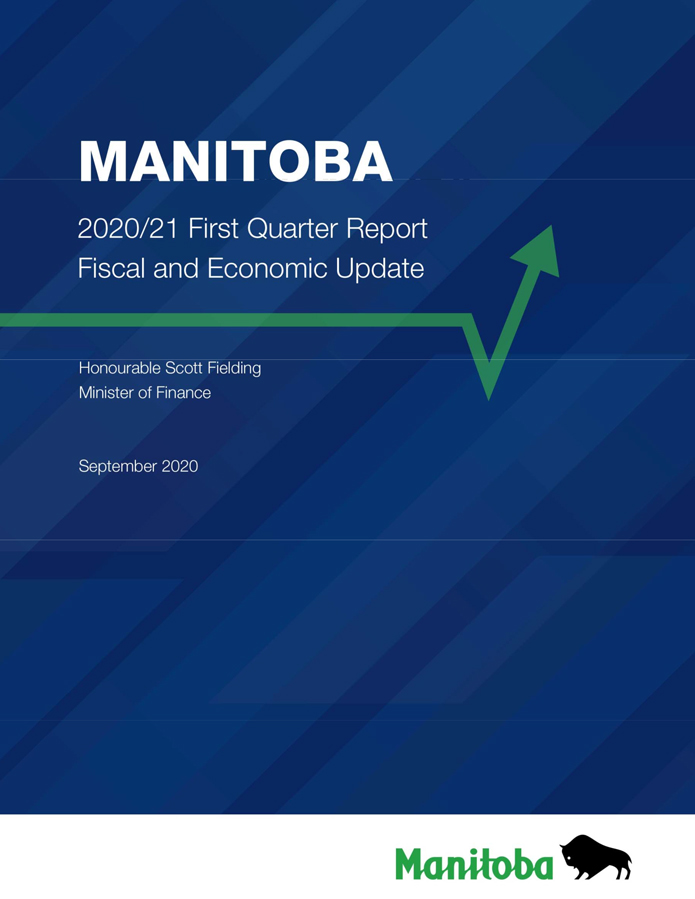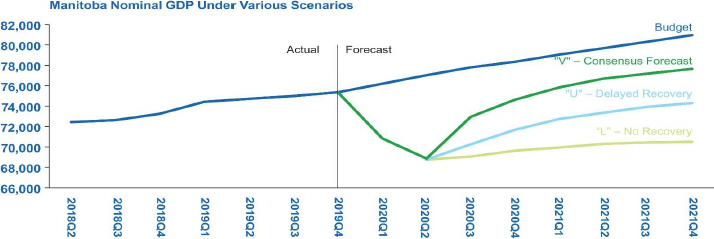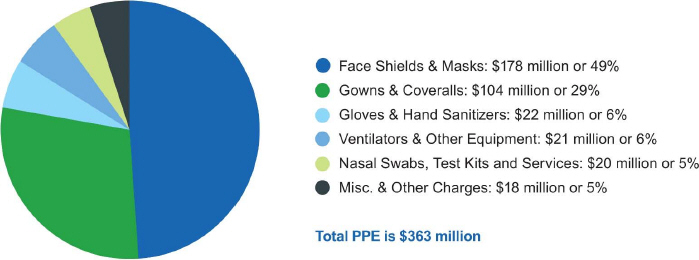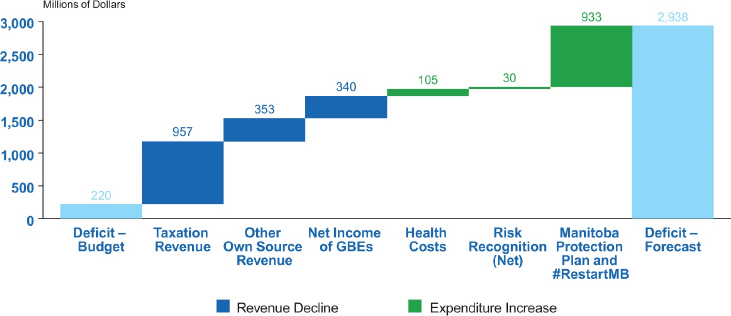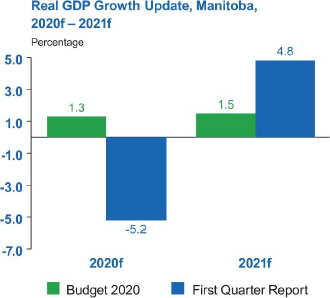However, the economic impact and the recovery phase have shown substantial differences across sectors. Some sectors are experiencing little disruption in sales or in job losses and are thriving during the pandemic, while others are hard hit, particularly within the service sector, including accommodation and food service and information and culture. This contrast is shown in a “K-shaped” recovery in the labour market, where jobs in the professional, scientific and technical services bounced back, while jobs in accommodation and food services remain at 13% below February, after declining by over 40%. Overall, employment in Manitoba recovered to a 4.2% year-to-date decline in August, third best among provinces. The unemployment rate is averaging 8.2%, the lowest in Canada. Similarly, retail spending rose to an unprecedented $1.9 billion in sales in July, as households increased expenditures. Some stores have reported a surge in sales (health and personal care, up 20%) and others showed a sharp decline (clothing at a -33%). Overall sales are down 2.5%, on a year-to-date basis, third best among provinces. The momentum of capital spending on buildings eased somewhat since the start of the pandemic, but remains at record levels. Investment in new construction is evident in the commercial, industrial, and public sectors (such as the construction of new schools). Total increase in non-residential structures is up 23%, on a year-to-date basis in 2020, the second highest among provinces. The impact of COVID-19 on Manitoba jobs is evident in labour income statistics. Wages and salaries fell for four consecutive months starting in February. Compared to last year, total earnings in the second quarter of 2020 were down by 7% compared to the same quarter last year. With more workers returning in August, wages and salaries are expected to increase in the second half of 2020. | | 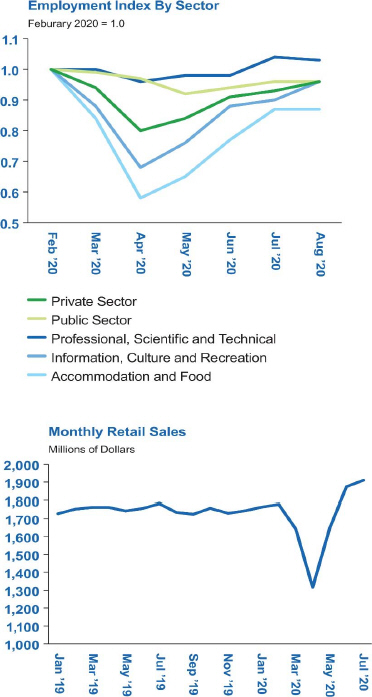
|
